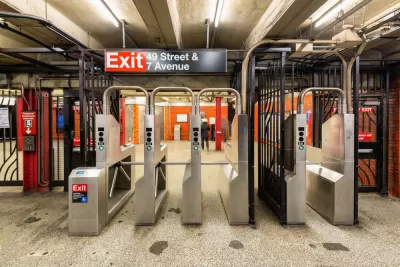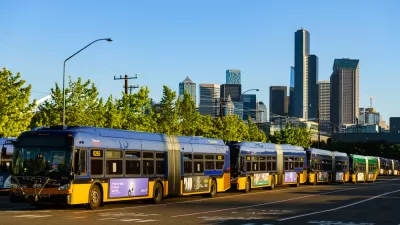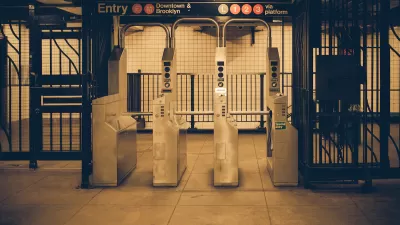While some of the country’s largest transit operators are cracking down on fare dodgers with expensive—and often cumbersome—turnstiles and gates, others are looking deeper to address the root causes of fare evasion.

“Fare evasion is a topic that rears its head regularly; it’s a staple of local TV news and a frequent target of high-profile crackdowns,” write John Surico and Lillianna Byington in Bloomberg CityLab. With ridership still well below pre-pandemic levels and many transit agencies facing a fiscal cliff, transit operators are cracking down on fare evasion even more severely.
But “At the same time, targeting riders with heavy-handed policing in the wake of a deadly pandemic that revealed the inequities of public transit in the US carries with it a tone that didn’t exist before. As does millions of dollars in spending that doesn’t appear to match the cost of the issue it’s trying to address.” Meanwhile, “technological solutions have been elusive, as dodger-resistant turnstiles can be both expensive to install and difficult to use, slowing boarding, limiting accessibility for wheelchair users and irritating paying riders.”
“Critics of fare evasion enforcement often cite the high expense of curbing it,” with a 2018 Streetsblog article pointing out that New York City’s MTA planned to spend $249 million to save $200 million in fare evasion. “Interactions with law enforcement can also pose physical risks, both to riders and transit staffers: Earlier this week, three members of the New York MTA’s Eagle Team, which works to combat fare evasion, were fired at by a bus rider over an unpaid fare.”
To address the problem in new ways, some cities are experimenting with diversion options in lieu of citations, allowing people to pay for transit with EBT cards, or eliminating fares—and the costs of fare collection and enforcement—altogether.
FULL STORY: The Real Costs of Curbing Fare Evasion

Planetizen Federal Action Tracker
A weekly monitor of how Trump’s orders and actions are impacting planners and planning in America.

Congressman Proposes Bill to Rename DC Metro “Trump Train”
The Make Autorail Great Again Act would withhold federal funding to the system until the Washington Metropolitan Area Transit Authority (WMATA), rebrands as the Washington Metropolitan Authority for Greater Access (WMAGA).

The Simple Legislative Tool Transforming Vacant Downtowns
In California, Michigan and Georgia, an easy win is bringing dollars — and delight — back to city centers.

The States Losing Rural Delivery Rooms at an Alarming Pace
In some states, as few as 9% of rural hospitals still deliver babies. As a result, rising pre-term births, no adequate pre-term care and "harrowing" close calls are a growing reality.

The Small South Asian Republic Going all in on EVs
Thanks to one simple policy change less than five years ago, 65% of new cars in this Himalayan country are now electric.

DC Backpedals on Bike Lane Protection, Swaps Barriers for Paint
Citing aesthetic concerns, the city is removing the concrete barriers and flexposts that once separated Arizona Avenue cyclists from motor vehicles.
Urban Design for Planners 1: Software Tools
This six-course series explores essential urban design concepts using open source software and equips planners with the tools they need to participate fully in the urban design process.
Planning for Universal Design
Learn the tools for implementing Universal Design in planning regulations.
Smith Gee Studio
City of Charlotte
City of Camden Redevelopment Agency
City of Astoria
Transportation Research & Education Center (TREC) at Portland State University
US High Speed Rail Association
City of Camden Redevelopment Agency
Municipality of Princeton (NJ)





























